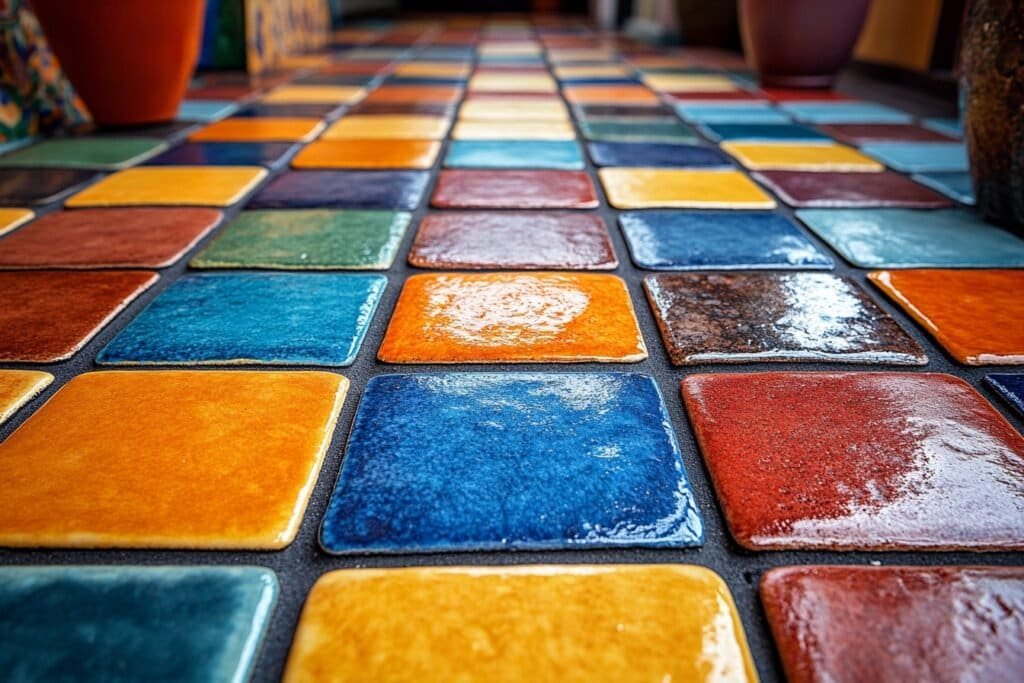How to clean grout in shower areas can feel like a daunting task, but it’s crucial for maintaining both the appearance and hygiene of your bathroom. Grout, the material between your shower tiles, is porous and easily absorbs moisture, dirt, and soap scum. Over time, this can result in unsightly stains, mold, and mildew growth, making your fresh-looking tiles look dirty and neglected.
In this comprehensive guide, we’ll take you through the most effective methods and tips for how to clean grout in a shower, so you can restore your bathroom to its sparkling, fresh state. Whether you’re doing regular maintenance or tackling the task as part of a larger bathroom remodel, keeping grout clean is crucial for a polished look.
Why Does Grout Get Dirty in Showers?
Grout is made from a mixture of water, sand, and cement, which makes it highly porous. This porous nature means that it easily absorbs water, dirt, soap scum, and even mold spores. Over time, these build up and create a breeding ground for bacteria, mold, and mildew, leading to discolored grout and potential health hazards.
Even regular shower use can contribute to grout becoming grimy, making it necessary to clean and maintain it regularly.
How to Clean Grout in a Shower: Essential Tools You’ll Need
Before starting your grout cleaning journey, gather the necessary tools for the job:
- Soft-bristled brush (or old toothbrush)
- Microfiber cloth (for wiping down tiles)
- Spray bottle
- Baking soda
- Hydrogen peroxide
- White vinegar
- Grout sealer (optional, but highly recommended for long-term maintenance)


Step-by-Step Guide to Cleaning Grout in a Shower
1. Pre-Clean the Tiles and Grout
Before jumping into deep cleaning, make sure the surface is free from loose dirt and debris:
- Wipe down the tiles with a damp microfiber cloth to remove any soap scum or surface dirt.
- Vacuum or sweep the area to ensure no dust or particles will interfere with the cleaning process.
- Let the area dry before proceeding with any cleaning solution.
2. Apply a Cleaning Solution
Depending on how dirty or stained the grout is, you can choose from several effective cleaning solutions:
Option 1: Baking Soda and Water Paste
Mix equal parts baking soda and water to create a thick paste. Baking soda acts as a gentle abrasive, lifting stains from the grout without damaging it.
- Apply the paste directly to the grout lines using a brush or your fingers.
- Let it sit for 5-10 minutes to allow it to penetrate the grime.
Option 2: White Vinegar and Water Solution
For lighter stains and everyday cleaning, a 1:1 mixture of white vinegar and water is effective. Vinegar is a natural disinfectant that helps break down soap scum and mineral deposits.
- Pour the mixture into a spray bottle.
- Spray generously onto the grout lines and let it sit for 5 minutes.
Option 3: Hydrogen Peroxide for Tough Stains
Hydrogen peroxide is ideal for removing stubborn stains, mold, and mildew. It also has natural whitening properties to brighten discolored grout.
- Pour hydrogen peroxide directly onto the grout or create a paste by mixing it with baking soda.
- Apply and let it sit for 10 minutes before scrubbing.
3. Scrub the Grout Lines
After applying the cleaning solution of your choice:
- Use a soft-bristled brush or an old toothbrush to scrub the grout lines in small circular motions.
- Focus on areas with visible stains or discoloration.
- Scrub gently but thoroughly, applying more pressure where needed for stubborn grime.
Pro Tip: Avoid using a hard-bristled brush or steel wool, as these can scratch the tiles or damage the grout.
4. Rinse the Area
Once you’ve scrubbed the grout lines:
- Rinse the shower tiles and grout with clean water to remove any residue from the cleaning solution.
- Use a microfiber cloth to wipe down the area and ensure no cleaner is left behind, which could attract dirt later on.
5. Dry and Polish the Tiles
After rinsing, it’s important to dry the area completely:
- Use a clean microfiber cloth to dry the tiles and grout. This step helps prevent watermarks and ensures the grout dries evenly.
Best Homemade Solutions for Grout Cleaning
If you prefer DIY cleaners, there are several homemade grout cleaning solutions that can be as effective as store-bought products:
1. Baking Soda and Water
Mix baking soda and water to form a paste. This mild abrasive is excellent for lifting surface stains without damaging the grout.
2. White Vinegar
White vinegar is a great natural disinfectant that helps remove soap scum, mineral deposits, and bacteria from grout lines.
3. Hydrogen Peroxide
For extra stubborn stains, hydrogen peroxide helps brighten and whiten grout. It’s particularly useful for combating mold and mildew.
These household solutions are eco-friendly and cost-effective, making them ideal for regular grout maintenance.
How to Keep Grout in Shower Looking Fresh
Once you’ve restored the grout in your shower to its clean, bright appearance, maintaining it is key to ensuring it stays that way.
1. Daily Maintenance with a Vinegar Spray
Keep a spray bottle of 1:1 vinegar and water solution in your shower. After every few uses, spray the solution onto the tiles and grout to prevent soap scum buildup.
- Label the bottle “Shower Spray” and use it 2-3 times a week for the best results.
2. Regular Scrubbing
Once a week, scrub the grout lightly with a baking soda paste or vinegar solution to prevent grime from setting in. This simple routine will keep your grout looking fresh.
3. Use a Grout Sealer
Sealing your grout after a deep clean creates a protective barrier that repels moisture and dirt. This will help prevent stains and mold from penetrating the grout.
- Apply a grout sealer once every 6-12 months to maintain its effectiveness.
What If Grout Cleaning Doesn’t Work?
In some cases, grout may be beyond cleaning due to deep staining, cracking, or mold growth that won’t go away. If your grout remains dirty after repeated attempts to clean it, it might be time to consider regrouting your shower.
Regrouting involves removing the old grout and applying a fresh layer. This restores the original look and ensures better protection from moisture. It’s also a great project to tackle during a bathroom remodel, as it freshens up the space and extends the life of your tiles. Check out our step-by-step guide on how to regrout a shower for more information.
Conclusion
Cleaning the grout in your shower doesn’t have to be a difficult or time-consuming task. By following these simple steps and using natural cleaning solutions like baking soda, vinegar, and hydrogen peroxide, you can easily restore your grout and keep it looking fresh.
Regular maintenance, combined with a good cleaning routine, will prevent stains, mold, and mildew from setting into the grout, ensuring your shower looks pristine for years to come.
Disclaimer: As an Amazon Associate, I earn from qualifying purchases. This means that if you click on certain links on this site and make a purchase, I may receive a small commission at no additional cost to you.


